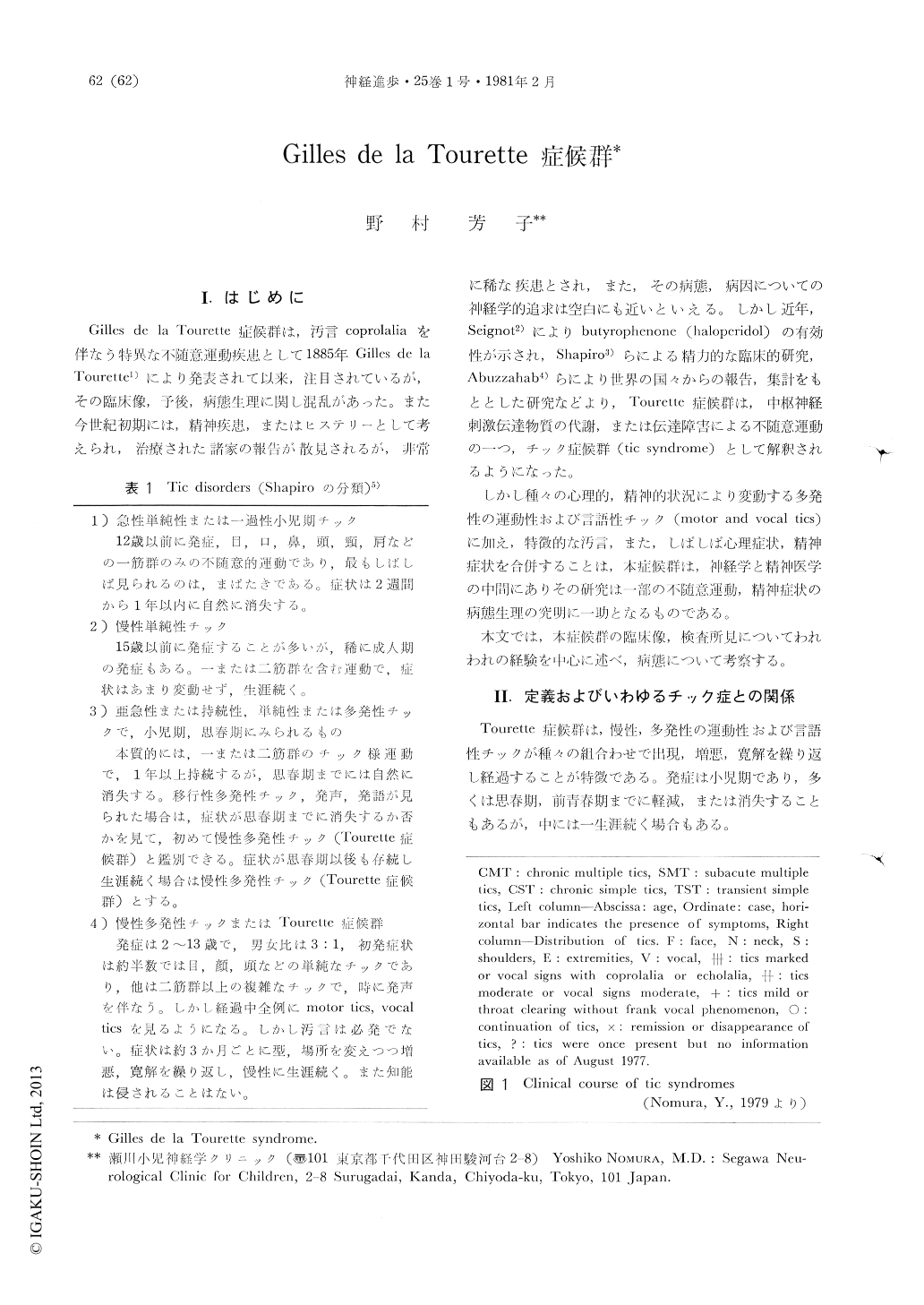Japanese
English
- 有料閲覧
- Abstract 文献概要
- 1ページ目 Look Inside
I.はじめに
Gilles de la Tourette症候群は,汚言coprolaliaを伴なう特異な不随意運動疾患として1885年Gilles de laTourette1)により発表されて以来,注目されているが,その臨床像,予後,病態生理に関し混乱があった。また今世紀初期には,精神疾患,またはヒステリーとして考えられ,治療された諸家の報告が散見されるが,非常に稀な疾患とされ,また,その病態,病因についての神経学的追求は空白にも近いといえる。しかし近年,Seignot2)によりbutyrophenone(haloperidol)の有効性が示され,Shapiro3)らによる精力的な臨床的研究,Abuzzahab4)らにより世界の国々からの報告,集計をもととした研究などより,Tourette症候群は,中枢神経刺激伝達物質の代謝,または伝達障害による不随意運動の一つ,チック症候群(tic syndrome)として解釈されるようになった。
しかし種々の心理的,精神的状況により変動する多発性の運動性および言語性チック(motor and vocal tics)に加え,特徴的な汚言,また,しばしば心理症状,精神症状を合併することは,本症候群は,神経学と精神医学の中間にありその研究は一部の不随意運動,精神症状の病態生理の究明に一助となるものである。
Abstract
Gilles de la Tourette syndrome (Tourette syndrome) is an involuntary movement disorder with coprolalia. The syndrome was initially described by Gilles de la Tourette in 1885, but there has been confusion for almost a century in regard to its definition, pathophysiology and prognosis. However, for the past two decades the efficacy of butyrophenone (haloperidol) and clinical characteristics have been clarified and have contributed to the understanding that this syndrome is an involuntary movement disorder of tic syndrome due to the defects of the central neurotransmission.

Copyright © 1981, Igaku-Shoin Ltd. All rights reserved.


